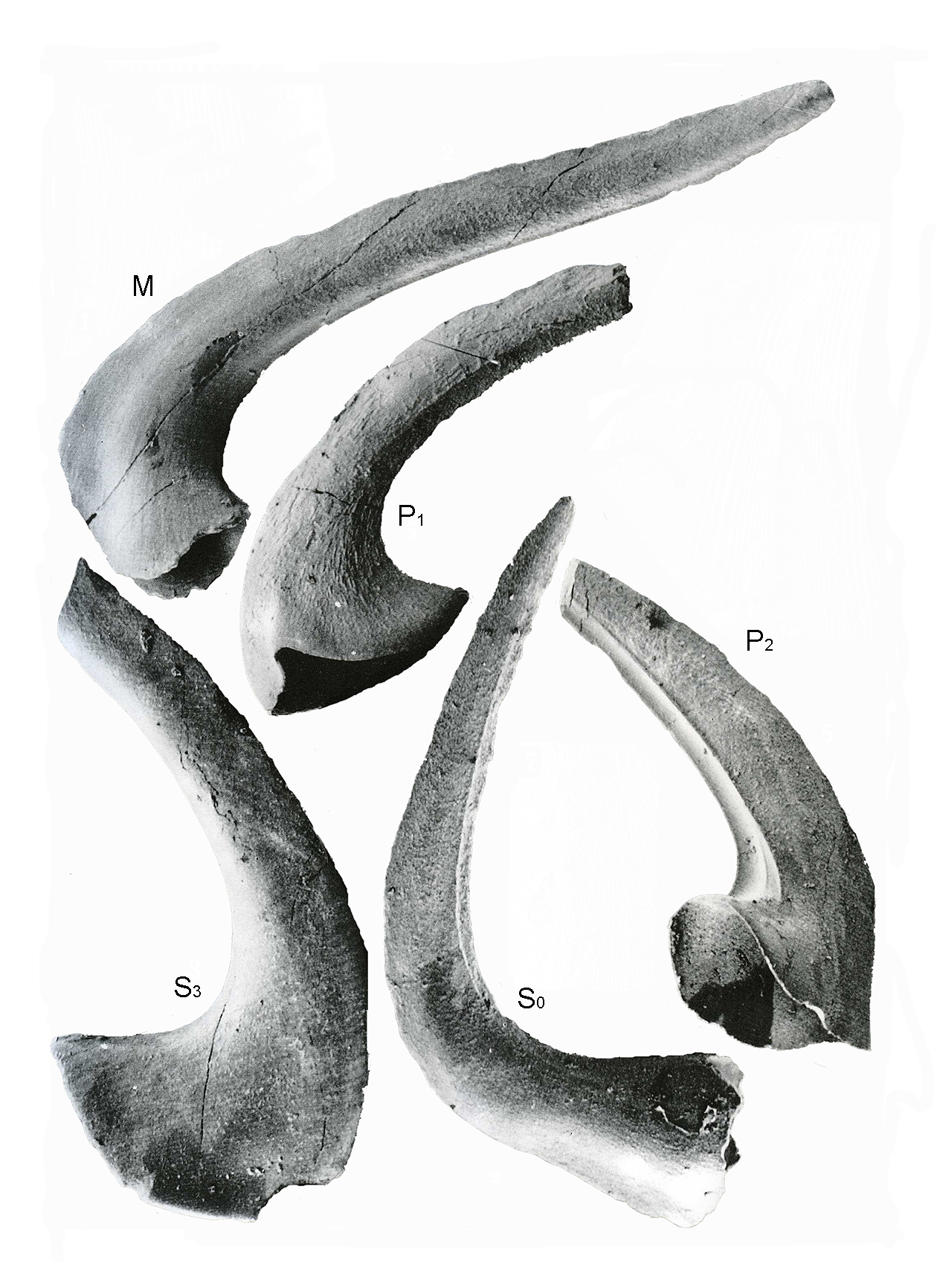Diagnoza
The symmetrical tr element with smooth lateral surfaces, its inner margin sharp, in juveniles with smooth flanks, but in adults the y may bear angulations. The ne elements robust , witha deep round incision above the base. All elements hyaline.
Synonims:
Drepanodus arcuatus PANDER; LINDSTROM, 1955;
Scandodus pipa n. sp.; LINDSTROM, 1955; Acontiodus reclinarus LINDSTROM; SPASSOV and TELLER, 1963; Drepanodus arcuatus PANDER; LrNDSTROM, 1971;
?Drepanodus arcuatus PANDER; BEDNARCZYK,1971;
Drepanodus proteus LINDSTROM; BEDNARCZYK, 1971; Drepanodus arcuatus PANDER; DZIK, 1976; Drepanodus arcuatus PANDER; STOUGE and BAGNOLI , 1988; cf. Drepanodus planus (PANDER); STOUGE and BAGNOLI, 1988.
Porównanie
Two main element types were identified by LINDSTROM(197 1), the apparatus rec onstruction
ha s been further developed by VAN WAMEL (1974), LOFGREN (1978), and DZIK (1990). During the evolution of thi s Drepan odus lineage elements become more and more prominently ornamented along their inner edges. In the Arenig some rare specimens (usually large ones) bear three ridges along this edge but I was not able to find any with more el aborated ornamentation, which is
typical for later D. robustus. Somewhat arbitrarily, I assign to D. arcuatus the se populations transition
al to D. robustus th at still did not develop five ridges along the inner edge in adult elements. "Protopanderodus n. sp. A" MCCRACKEN, 1989 from the P. serra Zone of Northern Yukon, Canada, may be a successor of D. arcuatus. Oblique bases make it superficially similar to some species of Protopanderodus which, however, have quite different "platform" series elements and less elaborated apparatuses.
Autekologia
Występowanie geograficzne
Zasięg czasowy
A few specimens of Drepanodus, collected by Dr. Wieslaw BEDNARCZYK from the limestone bed once exposed in the Buk6wka quarry definitely belong to this species. None of the two large tr elements pre sent in the sample ha s any lateral ridges. However, a specimen
of similar size from the borehole Buk6wka IG 1 (depth 83.5-84 m) shows five distinct ridges. This rather exceeds possible population variability and the sample seems thu s to be of different age, probably closer to the base of the Mójcza Limestone where similar large elements occur. Somewhat
enigmatic is the presence in both Bukówka samples of a few possible ke elements with a very convex posterior side and prominent medial rib. There are too few specimens available to state with certainty whether they belong to anot her sympatric species of Drepanodus or perhaps they represent ne e leme nts of a species of Protopanderodus.
To D. arcuatus I assign also population s from below the discon tinuity surface in Mójcza, with elements usually armed with three sharp ridges. Elsewhere the typical D. arcuatus is confined to the
Arenig .
Materiały muzealne
Literatura
Dzik, J. 1994a Conodonts of the Mójcza Limestone. In: J. Dzik, E. Olempska, & A. Pisera. Ordovician carbonate platform of the Holy Cross Mountains. Palaeontologia Polonica 53, 43-128.



